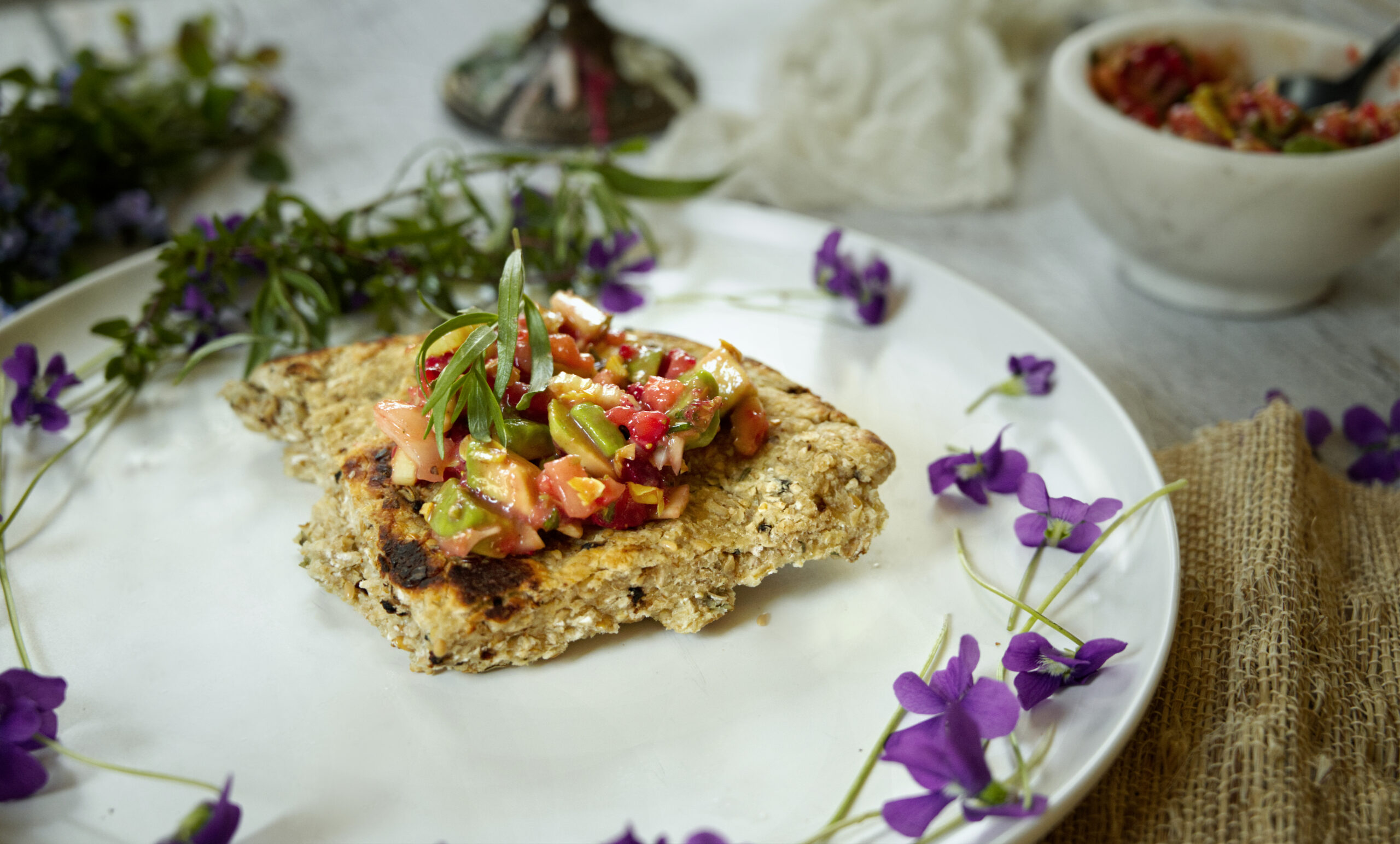Some words
The lengthening days, warming weather, and blooming violet fields make Beltane the opportune time to dust off picnic baskets, sprawl out a blanket on the luscious green grass, and have a refreshing meal under the sun with a special someone.
What’s beltane
The sabbat of Beltane, celebrated on May 1st in the Northern Hemisphere and October 31st in the Southern Hemisphere, marks the beginning of summer according to the ancient Celtic calendar. This is a time to usher winter out the door and welcome the warmth, liveliness, and vitality of the next season. Love, fertility, and abundance are the main attributes that characterize this day of merry-making, dancing, and romancing.
Based on traditional beliefs, the veil separating the physical world from the ethereal realm attenuates around Beltane, and therefore magical beings can cross the threshold with more ease. As they roam freely around this world, the notoriously mischievous fae folk are believed to gather around hedges, hide in forests, and bathe in streams and ponds. In order to keep the faeries at bay, prevent disasters, and safeguard maturing crops and food stockpile, it is customary to leave offerings of oatcakes, honey, and sweet wines in places such as gardens, woodlands, and lakeshores.
Bannocks
Oatcakes are commonly known as bannocks in Scotland and other parts of Britain and Ireland. A simple mixture of oats, flour, and buttermilk that is cooked on an oiled cast iron griddle, bannocks are consumed as an accompaniment to cheeses, jams, and honey, or broken into a bowl of milk and berries for a hearty breakfast. Traditionally prepared on Beltane to ingratiate the fae and secure a bountiful harvest in the months to come, bannocks are inexpensive to produce and easy to pack and eat outdoors, making them the perfect food to share at a picnic with friends and family, a loved one, or the fae folk.
Violets
Violets are ubiquitous this time of year, scattered all over lawns and meadows. Traditionally associated with gentle, unwavering love and faithful devotion, violets are the perfect plant ally to call upon while celebrating Beltane and practicing some spring kitchen magic. Medicinally, violets are known for being high in vitamins A and C, especially in their edible leaves. Containing flavonoids, alkaloids, and mucilage, this plant can assist in regulating blood pressure, soothing chest congestion, and easing coughs.
To pay homage to the essence of Beltane, I concoct vegan bannocks using violet leaves and an accompanying sweet and tangy strawberry salsa that is dressed in an infusion of violet rice vinegar. Prepare the vinegar ahead of time, as the violets should steep overnight at a minimum for their flavor to come through.
Violet Vinegar
- ⅓ cup violet flowers
- ⅔ cup rice wine vinegar
Strawberry Salsa
- 1 celery heart, including leaves
- 1 cup strawberries
- 1 medium avocado, medium-ripe
- ¼ cup chopped violet leaves
- 1 tbsp extra-virgin olive oil
- ½ tsp salt
- ½ tsp green peppercorns, crushed
- A drizzle of violet-infused rice vinegar
Oatcake
- 1½ cup rolled oats
- 1½ cup flour, all-purpose
- ¾ cup oat milk
- 2 tbsp flax seeds
- ½ tsp apple cider vinegar
- ½ tsp baking powder
- 1 tsp salt
- ¼ cup violet flowers, fresh
- 3-4 tarragon sprigs, fresh
- 2 tbsp extra virgin olive oil
The Vinegar Infusion
For the violet-infused vinegar, soak freshly-picked violets in rice vinegar overnight. The violets can steep in the solvent for up to a week. Strain and bottle.

The Strawberry Salsa
Dice the strawberries and the celery hearts and transfer to a mixing bowl along with the violet leaves. Peel, pit, and dice the avocado and add to the bowl. Season with the crushed green peppercorn, salt, oil, and 2-3 generous tablespoons of violet-infused vinegar, depending on how much zing you want to come through. Combine the salsa ingredients well, pressing down with a fork or masher to blend together the juices and oils, and marinate in the refrigerator until ready to serve with the bannock breads.
The Oatcake
In a small bowl, blend the apple cider vinegar into the oat milk to make a homemade plant-based buttermilk. Set aside to acidify for about 10 minutes.
In a food processor, blitz the oats to obtain a semi-coarse meal. Transfer the meal into a large mixing bowl. Add the flour, flax seeds, salt, and baking powder. Combine the ingredients with a wooden spoon until thoroughly distributed.
Chop the tarragon leaves and violet flowers finely and add to the flour mixture. Stir the buttermilk and incorporate it into the flour mixture to obtain a crumbly dough.
Tip the bowl over a workbench, knead the dough a few times, and roll out to obtain a ½” flat disk, approximately 8-10” in diameter.
Heat up the oil in a large cast iron skillet, or griddle, and cook the bannock for 5-6 minutes each side, or until golden brown. While the bannock is cooking, imprint a cross with a metal spatula through its diameter. This facilitates tearing the bread into quarter pieces once cooked.
Divide into quarters, top with 2-3 tbsp of salsa, and taste a bite of May Day.





